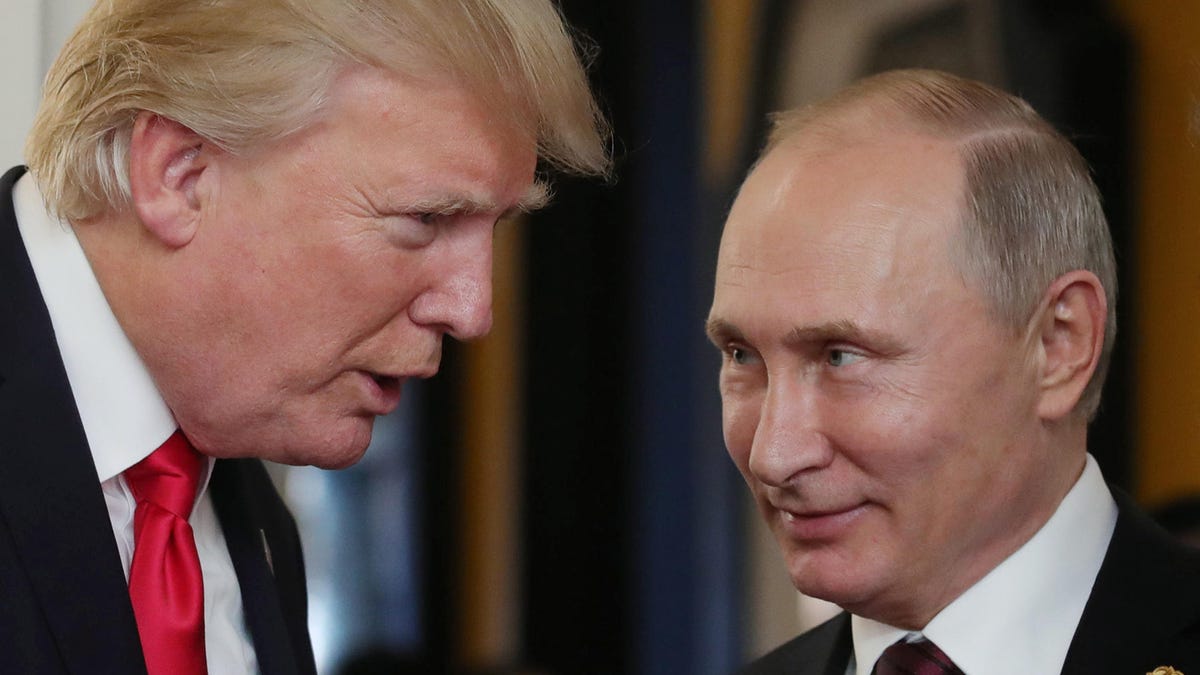Deepfake debunking tool may protect presidential candidates. For now. Sometimes
Researchers have discredited all kinds of video forgeries targeting political leaders by creating pseudo-fingerprints of their unique manners of speaking.

This is a real photo of US President Donald Trump speaking with Russia's President Vladimir Putin in 2017.
Deepfakes of world leaders may be easier to debunk ahead of the 2020 US presidential election with a new detection method. The rest of us are still out of luck, though. And the technique works only for a specific style of talking-head-style deepfake. Oh, and it's only a matter of time before manipulators figure out how to dodge this kind of detection, too.
As the researchers behind the breakthrough put it: Democracy, national security and society are at stake.
The researchers, who outlined the new technique in an academic paper Wednesday, created profiles of the unique expressions and head movements made by powerful people talking, such as Donald Trump, Hillary Clinton, Barack Obama and US presidential hopeful Elizabeth Warren. This "soft biometric model" helped detect a range of deepfakes, the kind of manipulated videos powered by artificial intelligence that have sprung up lately featuring Mark Zuckerberg, Kim Kardashian and others.
The researchers spelled out the threat of deepfakes in stark terms.
"With relatively modest amounts of data and computing power, the average person can, for example, create a video of a world leader confessing to illegal activity leading to a constitutional crisis, a military leader saying something racially insensitive leading to civil unrest in an area of military activity, or a corporate titan claiming that their profits are weak leading to global stock manipulation," they wrote.
Deepfakes are video forgeries that can make people appear to be doing or saying things they never did -- think of this as Photoshop for video on steroids. Digital manipulation of video has existed for decades, but AI-driven deepfake software has made doctored clips easier for anyone to make and harder to detect as fake.
The new research was released the day before a House Intelligence committee hearing on the threat of deepfakes.
On Thursday, lawmakers heard from experts about the national security challenges of manipulated media created with artificial intelligence, like deepfakes. The committee chair, Democratic Rep. Adam Schiff, said deepfakes posed "nightmarish" possibilities for the 2020 presidential elections, with voters potentially "struggling to discern what is real and what is fake."
Experts testifying before the committee hammered home how difficult it is for deepfake detection to stay ahead of the advancements being made in manipulation.
"This is a cat-and-mouse game," David Doermann, a professor at the University at Buffalo and a founder of a DARPA media forensics program to address deepfakes, said Thursday during the hearing. "As things get better for being able to deceive visually, [manipulators are] going to move on to covering up their trace evidence."
Deepfake debunking
In Wednesday's paper, the researchers' new technique created a model for how world leaders naturally speak, based on facial/head features like nose wrinkling, lip tightening and head rolling. That model served as a sort of fingerprint for how each individual talks.
"Although not visually apparent, these correlations are often violated by the nature of how deepfake videos are created and can, therefore, be used for authentication," they wrote.
An example of the intensity of Barack Obama's eyebrow lift measured over a 250-frame video clip.
The three main types of deepfakes -- referred to here as face swaps, lip syncs and puppet-master fakes -- all rely on rewriting how a victim's entire face or mouth moves. But all the subtleties of that victim's pseudo-fingerprint are too hard to replicate even by the best impersonator. So the researchers are able to apply this fingerprint they developed to distinguish between real and fake videos.
This fingerprinting method was found to be robust against a particular way that deepfake creators try to cover their tracks: compression. By purposely degrading the quality of a deepfake video, manipulators can make it harder for current pixel-checking detection methods to identify a fake. The researchers' technique proved to be resilient against compression as a way deepfakers try to cover their tracks.
But their detection technique had shortcomings, too. It was less reliable when the person of interest in the video is consistently looking away from the camera rather than addressing it directly. That means a live interview looking off-camera would be harder to detect under this method. It also means that this method works best only for talking-head style videos, when the leader is talking directly to camera.
The paper -- which was based on research funded by Google, Microsoft and DARPA -- is titled "Protecting World Leaders Against Deep Fakes" and published by researchers at the University of California, Berkeley, and the University of Southern California.
Originally published June 12
Update June 13: Adds details from House hearing.

